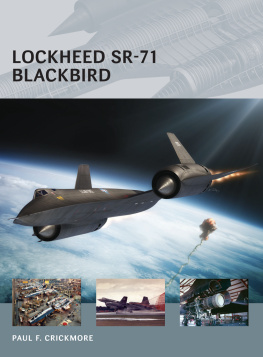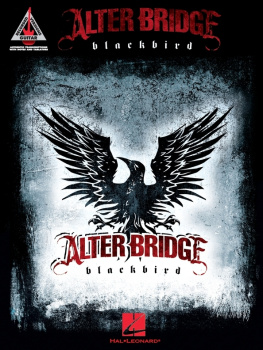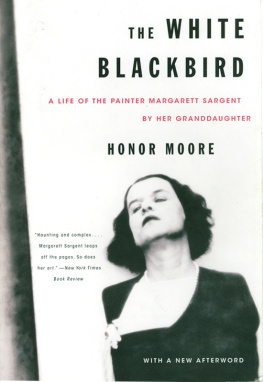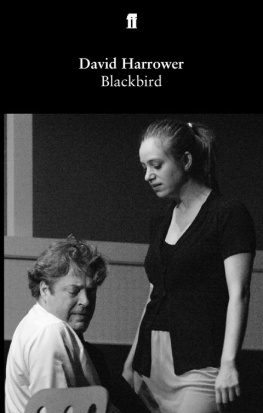Crickmore - Lockheed SR-71 Blackbird
Here you can read online Crickmore - Lockheed SR-71 Blackbird full text of the book (entire story) in english for free. Download pdf and epub, get meaning, cover and reviews about this ebook. City: Oxford;USA, year: 2015, publisher: Osprey Publishing, genre: Romance novel. Description of the work, (preface) as well as reviews are available. Best literature library LitArk.com created for fans of good reading and offers a wide selection of genres:
Romance novel
Science fiction
Adventure
Detective
Science
History
Home and family
Prose
Art
Politics
Computer
Non-fiction
Religion
Business
Children
Humor
Choose a favorite category and find really read worthwhile books. Enjoy immersion in the world of imagination, feel the emotions of the characters or learn something new for yourself, make an fascinating discovery.
- Book:Lockheed SR-71 Blackbird
- Author:
- Publisher:Osprey Publishing
- Genre:
- Year:2015
- City:Oxford;USA
- Rating:5 / 5
- Favourites:Add to favourites
- Your mark:
- 100
- 1
- 2
- 3
- 4
- 5
Lockheed SR-71 Blackbird: summary, description and annotation
We offer to read an annotation, description, summary or preface (depends on what the author of the book "Lockheed SR-71 Blackbird" wrote himself). If you haven't found the necessary information about the book — write in the comments, we will try to find it.
Lockheed SR-71 Blackbird — read online for free the complete book (whole text) full work
Below is the text of the book, divided by pages. System saving the place of the last page read, allows you to conveniently read the book "Lockheed SR-71 Blackbird" online for free, without having to search again every time where you left off. Put a bookmark, and you can go to the page where you finished reading at any time.
Font size:
Interval:
Bookmark:


First published in Great Britain in 2015 by Osprey Publishing,
PO Box 883, Oxford, OX1 9PL, UK
PO Box 3985, New York, NY 10185-3985, USA
E-mail:
This electronic edition published in 2015 by Bloomsbury Publishing Plc
Bloomsbury is a registered trademark of Bloomsbury Publishing Plc
Osprey Publishing is part of the Osprey Group
2015 Osprey Publishing Ltd.
All rights reserved
You may not copy, distribute, transmit, reproduce or otherwise make available this publication (or any part of it) in any form, or by any means (including without limitation electronic, digital, optical, mechanical, photocopying, printing, recording or otherwise), without the prior written permission of the publisher. Any person who does any unauthorised act in relation to this publication may be liable to criminal prosecution and civil claims for damages.
A CIP catalog record for this book is available from the British Library
Print ISBN: 978-1-4728-0492-1
PDF ebook ISBN: 978-1-4728-0493-8
ePub ebook ISBN: 978-1-4728-0494-5
Osprey Publishing is supporting the Woodland Trust, the UK's leading woodland conservation charity, by funding the dedication of trees.
www.ospreypublishing.com
Title page image: SR-71s began operating from RAF Mildenhall, England, from 1976. Having lined up and completed Exhaust Gas Temperature (EGT) trim checks, an eerie silence loaded with expectation descended over the entire airfield while the crew of 61-7964 awaited a green light from the control tower for a radio silent departure at the beginning of an operational mission on December 17, 1987. (Paul F. Crickmore)
ACKNOWLEDGMENTS
The material from this book was assembled over 30 years and came from two basic sources open literature including books, newspapers, professional journals, various declassified reports, and first-hand accounts from pilots, RSOs and other people associated with the Senior Crown program.
Much of the information contained within these pages was pieced together during the course of numerous interviews (many of which were taped, others being conducted over the internet), with those intimately connected with the Senior Crown program. Several contributed information with the proviso that their anonymity be respected.
My grateful thanks therefore goes to Col Rich Graham, a good friend for over 30 years; General Pat Halloran; also Cols Don Walbrecht, Buddy Brown, Don Emmons, Tom Allison, Ed Payne, Tom Pugh, BC Thomas, Jerry Glasser, Frank Stampf, Buzz Carpenter, Curt Osterheld, Blair Bozek and Tom Veltri, also Flt Lt Adam Crickmore, Bob Archer, Tony Landis, Bob Gilliland, Bob Murphy, Paul Eden, Jay Miller, Jeff Richelson, Mike Relja, Yefim Gordon and David Allison.
I also wish to thank Cols Tony Bevacqua, Pat Bledsoe, Larry Boggess, Gary Coleman, Ken Collins, Dave Dempster, Bruce Douglass, Carl Estes, Tom Estes, Ty Judkin, Joe Kinego, John Kraus, Jay Murphy, Dewain Vick, Jim Watkins, Rich Young and Jack Maddison; Lt Cols Ben Bowles, Nevin Cunningham, Bill Flanagan, Jim Greenwood, Dan House, Tom Henichek, Bruce Leibman, GT Morgan, Bob Powell, Maury Rosenberg, Tom Tilden, Ed Yielding, Reg Blackwell and Stormy Boudreaux; Majs Doug Soifer and Terry Pappas; also Kent Burns, Russ Daniell, Kevin Gothard, Lindsay Peacock and Chris Pocock.
Thanks too to my editor Tom Milner; and to Neil and Pauline for their endless support. Last but by no means least my love and thanks go to Ali, my amazing wife who has been a rock during my recent health scare.
DEDICATION
For my amazing wife Ali
CONTENTS
INTRODUCTION
Napoleon Bonaparte once said, Impossible is a word found only in the dictionary of fools. This ethos could equally have been the mantra of Clarence L. Kelly Johnson and his team at Lockheeds so-called Skunk Works, located at Burbank, California, as their aeronautical design and engineering accomplishments pushed at the very boundaries of the barely possible. They were responsible for designing and building the United States first operational jet fighter, the Lockheed P-80 Shooting Star. This was followed by the legendary F-104 Starfighter the missile with a man in it. Next came their ultra-high-flying, reconnaissance-gathering U-2, which 60 years on continues to make immeasurable contributions to the US intelligence community. There then followed the iconic series of Mach 3 plus Blackbirds the Central Intelligence Agencys (CIAs) A-12, the US Air Forces YF-12 interceptor prototype and finally the incredible SR-71.
Designed for sustained triple-sonic flight (2,200mph), at altitudes in excess of 80,000ft (15 miles), the SR-71 always referred to by the crews that flew it as Habu, after a poisonous pit-viper found on the island of Okinawa remains the highest, fastest operational jet ever built, despite having first flown over 50 years ago. The Habu was prematurely retired by the US Air Force and flew its last operational flight on January 18, 1990, during what was at the time an almost obscene rush to slash the defense budget and cash in on the so-called peace dividend at the end of the Cold War.
A hint of the high regard in which the Air Force initially held the SR-71 program can perhaps be gleaned from what was its classified codename, Senior Crown. Designed to undertake the role of gathering high-resolution, strategic area reconnaissance of denied territory, the SR-71s use of extreme speed, altitude and the first application of in-built stealth technologies to dramatically reduce its radar cross section (RCS), all combined to vastly increase the platforms survivability in a high-threat environment. Indeed in the early 1960s, when Kelly Johnson allocated the Lockheed internal build numbers, or Article numbers, to the SR-71, he was so confident that the aircraft would remain immune from enemy interception for 40 years, he sequentially began numbering them from 2001.
For information on the A-12, the YF-12, and the M-21/D-21 reconnaissance drone platform, see Air Vanguard 12: Lockheed A-12: the CIA's Blackbird and other variants.
DESIGN AND DEVELOPMENT
On September 14, 1960, encouraged by the success of his earlier A-12 reconnaissance design for the CIA and the YF-12A interceptor proposal for the Air Force, Kelly Johnson began work on a reconnaissance bomber version of the basic design that he called the RB-12 (RB for Reconnaissance Bomber). In January 1961 he took his unsolicited proposal to Washington and dropped it on the desk of Undersecretary of the Air Force Dr Joseph Charyk. Charyk instructed Col Horace Templeton at the Air Development Center located at Wright Field, Ohio, to conduct an engineering analysis of the proposal. But lacking the required detailed knowledge of integrated bomber systems, Templeton recruited into his team Major Ken Hurley. This proved to be an extremely insightful move, but it placed Hurley in a tricky position as he was instructed to continue with his important White World Air Force work on stand-off weapons for the North American RS-70 Reconnaissance Strike bomber (later rechristened the B-70), whilst also working on the Black World Lockheed proposal. To further complicate things he was to report in parallel to his boss at the Pentagon, Col David Jones, as well as Col Templeton, whilst under the strictest orders not to inform Jones about his other job since Jones wasnt cleared into the program.

Font size:
Interval:
Bookmark:
Similar books «Lockheed SR-71 Blackbird»
Look at similar books to Lockheed SR-71 Blackbird. We have selected literature similar in name and meaning in the hope of providing readers with more options to find new, interesting, not yet read works.
Discussion, reviews of the book Lockheed SR-71 Blackbird and just readers' own opinions. Leave your comments, write what you think about the work, its meaning or the main characters. Specify what exactly you liked and what you didn't like, and why you think so.











